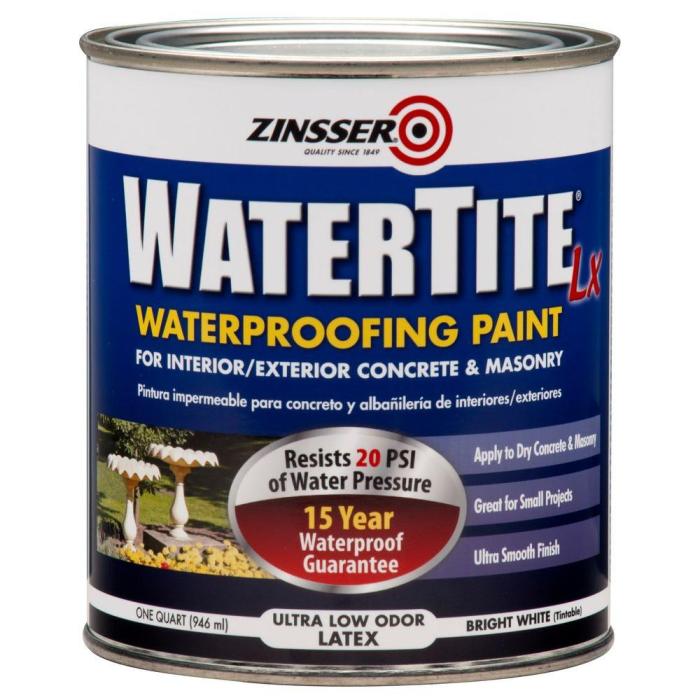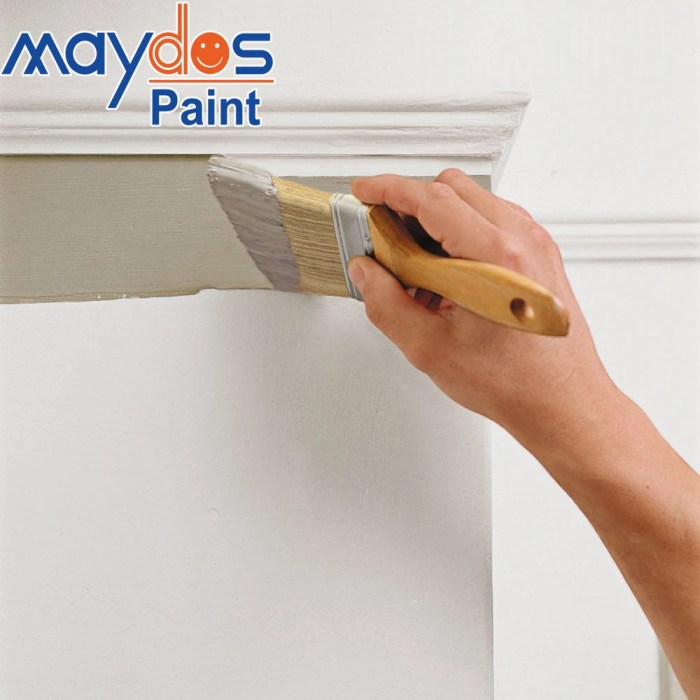Crafting Waterproof Exterior Paint Solutions: A Comprehensive Guide

Embark on a journey through the world of waterproof exterior paint solutions, where we delve into the significance of using such paint and explore the myriad benefits it offers over regular options. From application techniques to maintenance tips, this guide is your go-to resource for all things waterproof paint.
Waterproof Exterior Paint Solutions

When it comes to protecting your home from the elements, using waterproof exterior paint is essential. This type of paint forms a protective barrier against moisture, preventing water from seeping into the walls and causing damage.
One of the key benefits of waterproof paint is its ability to withstand harsh weather conditions such as rain, snow, and humidity. Unlike regular paint, waterproof paint is designed to be more durable and long-lasting, providing better protection for your home's exterior surfaces.
Examples of Situations
- In coastal areas where homes are exposed to saltwater and high humidity levels, waterproof exterior paint is crucial to prevent corrosion and mold growth.
- In regions with heavy rainfall or snowfall, waterproof paint helps to prevent water damage and extends the lifespan of the exterior surfaces.
- For buildings with flat roofs or areas prone to water pooling, using waterproof paint can help prevent leaks and structural damage.
Types of Waterproof Exterior Paint

When it comes to waterproof exterior paint, there are different types available in the market to suit various needs and preferences. Two common options are acrylic-based waterproof paint and oil-based waterproof paint.
Acrylic-based Waterproof Paint
Acrylic-based waterproof paint is known for its durability and flexibility. It forms a protective barrier on the surface, making it resistant to water, UV rays, and mildew. Here are some key features of acrylic-based waterproof paint:
- Quick drying time, allowing for faster application
- Great color retention over time
- Easy to clean and maintain
- Environmentally friendly with low VOC content
Oil-based Waterproof Paint
Oil-based waterproof paint is known for its excellent adhesion and long-lasting finish. It provides a tough and glossy surface that is highly resistant to moisture. Here are some key features of oil-based waterproof paint:
- Excellent coverage and hiding power
- Highly durable and suitable for high-traffic areas
- Good resistance to harsh weather conditions
- Requires longer drying time compared to acrylic-based paint
Application Techniques
When it comes to applying waterproof exterior paint, proper techniques are crucial to ensure a long-lasting and effective finish. Below are step-by-step instructions on how to apply waterproof exterior paint, along with essential preparation tips and tricks to achieve a smooth and even coat.
Preparation Before Application
Before you start applying waterproof exterior paint, it is important to prepare the surface properly. This includes cleaning the surface thoroughly to remove any dirt, dust, or debris. You may also need to fill in any cracks or holes and sand the surface to create a smooth base for the paint to adhere to.
- Clean the surface using a pressure washer or scrubbing brush and mild detergent to remove dirt and grime.
- Repair any cracks or holes with a suitable filler and allow it to dry completely before proceeding.
- Sand the surface with fine-grit sandpaper to smooth out any rough patches and create a uniform surface.
- Mask off any areas that you do not want to paint, such as windows, doors, and trim, using painter's tape.
Applying Waterproof Exterior Paint
Once the surface is clean and properly prepared, you can start applying the waterproof exterior paint using the following steps:
- Stir the paint thoroughly before application to ensure an even consistency.
- Apply a primer if needed, especially on bare surfaces, to improve adhesion and coverage.
- Use a high-quality brush, roller, or sprayer to apply the paint evenly and smoothly.
- Work in small sections, applying the paint in thin, even coats to prevent drips and runs.
- Allow each coat to dry completely before applying the next one, following the manufacturer's instructions for drying times.
- Apply a second or third coat if necessary to achieve the desired level of waterproofing and coverage.
- Remove painter's tape carefully once the paint is dry to the touch but still curing to avoid peeling off the paint.
Maintenance and Longevity
Regular maintenance is key to preserving the waterproofing properties of exterior paint over time. By following a few simple steps, you can ensure the longevity of your waterproof paint and protect your exterior surfaces from the elements.
Durability in Various Weather Conditions
- Waterproof exterior paint is designed to withstand various weather conditions, including rain, snow, heat, and UV exposure.
- Properly applied waterproof paint can provide long-lasting protection against moisture and prevent water damage to the underlying surface.
- Regular inspections and touch-ups can help maintain the integrity of the waterproofing barrier and extend the lifespan of the paint.
Recommendations for Extending Lifespan
- Clean the exterior surfaces regularly to remove dirt, debris, and pollutants that can degrade the paint over time.
- Inspect the painted surfaces for signs of wear and damage, such as peeling, cracking, or fading, and repair them promptly.
- Apply a fresh coat of waterproof paint every few years to reinforce the protective barrier and enhance the appearance of the exterior.
Final Conclusion

In conclusion, waterproof exterior paint solutions stand as a crucial element in maintaining the longevity and durability of exterior surfaces. By understanding the types available, application methods, and maintenance tips, you can ensure a smooth and lasting finish that withstands the test of time.
Dive into the world of waterproof paint and elevate your exterior aesthetics with confidence.
Key Questions Answered
How long does waterproof exterior paint last?
Waterproof exterior paint can last anywhere from 5 to 10 years, depending on the quality of the paint and the environmental conditions it's exposed to.
Can waterproof paint be used on all types of surfaces?
Waterproof paint is versatile and can be used on various surfaces such as wood, concrete, metal, and stucco.
Is waterproof exterior paint more expensive than regular paint?
While waterproof exterior paint may have a higher upfront cost, its longevity and durability often make it a cost-effective choice in the long run.

